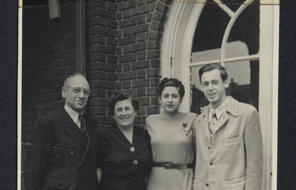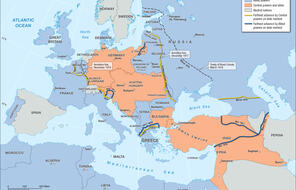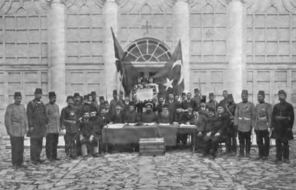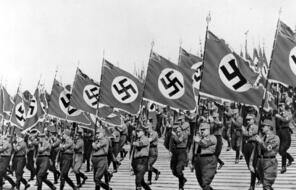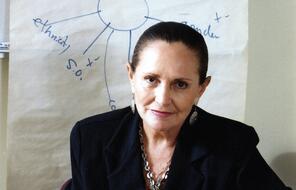Creating the German Nation
At a Glance
Language
English — USSubject
- Civics & Citizenship
- History
- Social Studies
- The Holocaust
- Human & Civil Rights
By the early 1800s, the biological view of race was gaining legitimacy in the minds of many Europeans and Americans. As a result, it shaped the way many people defined the word nation. According to their definition, the members of a nation not only shared a common history, culture, and language but also common ancestors, character traits, and physical characteristics. Many believed, therefore, that a nation was a biological community and that membership in it was passed on from one generation to the next. Among those who promoted this idea were a number of German professors and other scholars. In 1810, one German nationalist wrote: “A state without a Volk (a people who share a language and culture) is nothing, a soulless artifice; a Volk without a state is nothing, a bodiless airy phantom, like the Gypsies* and the Jews. Only state and Volk together could form a Reich (great empire), and such a Reich cannot be preserved without Volkdom.” 1
This concept of the German nation came at a time when what is now Germany was divided into 30 separate and often quarreling states, each with its own ruler and its own laws. Many students at German universities were eager to unite the German people of these states.
In 1817, some of those students assembled at Wartburg to celebrate the 300th anniversary of Martin Luther’s break with the Roman Catholic Church and the start of Protestantism. The students regarded Luther as more than a religious leader. To them, he was also a German nationalist. After vowing that they would never fight other Germans, the students threw dozens of books that they considered anti-German into a huge bonfire in the “name of Justice, the Fatherland, and the Spirit of the Community.”
To the young men who gathered around the bonfire, nationalism was a crusade. Its aim was not only to “restore” a powerful German nation but also to protect its purity. It was an idea that also attracted such scholars as Friedrich Schlegel, who imagined the founders of the German Volk as a gifted “race” who had left India long ago and carried its culture westward. Schlegel did not have a name for this ancient people, but others called them Indo-Europeans. It was not until later in the century that they became known as “Aryans,” the name of a group of people who inhabited parts of what is now India around 1500 BCE. Scholars today reject Schlegel’s theory that this group migrated west and shaped German culture.
The students, their teachers, and other German nationalists saw non-Germans as “outsiders.” Some insisted that those people could become Germans if they assimilated—that is, if they were “properly” educated in German customs and traditions and accepted Christianity as their faith. Jews were one of the largest minorities in Germany at the time, though they were only about 1% of the population. Many of them doubted the sincerity of calls to assimilate. They were painfully aware that a growing number of Germans believed that assimilation was not enough to turn a Jew into a German. Eduard Meyer, a German historian, wrote in the mid-1800s:
Baptized or not, it’s all the same. We don’t hate the religion of the Jews but the many hateful characteristics of these Asiatics, among them their so frequent impudence and presumption, their immorality and frivolity, their noisy behavior, and their so frequently base approach to life. . . . They belong to no people, no State, no community; they rove about the world as adventurers, sniffing around . . . and they stay where they find lots of opportunity for speculation. 2
Even as some Germans were treating Jews as outsiders who could never belong, many Jews were demanding acceptance as both Germans and Jews. One of the most prominent was Gabriel Riesser, a legal scholar. In 1831, he wrote an article demanding equal rights for Jews as a matter of “honor and justice.” Heinrich Paulus, a professor of languages and theology at the University of Heidelberg, responded by arguing that Jews were “Ausländers”—foreigners incapable of understanding the German soul. Riesser replied, “Whoever disputes my rights to my German fatherland disputes . . . my ideas, my feelings, the language which I speak, the air that I breathe; therefore I have to defend myself against those people as if they were murderers.” 3
Riesser saw no contradiction between his religion and his right to citizenship. He argued:
There is only one baptism that can initiate one into a nationality and that is the baptism of the blood in the common struggle for a fatherland and for freedom. “Your blood was mixed with ours on the battlefield,” this was that cry which put an end to the last feeble stirrings of intolerance and antipathy in France. The German Jews also have earned this valid claim to nationality. . . . They have fought both as conscripts and volunteers in proportionate numbers within the ranks of the German forces. 4
In 1848, Jewish activists, including Riesser, joined their Christian counterparts in a revolution that rocked much of Europe, including the German states. The goal was democracy and unification. Riesser was one of nine Jews elected to a “National German Parliament” in Frankfurt; he also served as its vice president. Among the lawmakers’ first acts was a proclamation that stated: “Every German has full freedom of conscience. Nobody shall be forced to disclose his religious creed.” It also stated that “enjoyment of civil or political rights shall be neither conditioned nor limited by religious confession [identification].”
Yet as delegates were trying to sustain a united Germany, the mood in Europe was changing—particularly the mood of the well-to-do. Within a few months, most of Europe’s kings and princes, including those of the former German states, had regained power and the old order was restored. Still, not all of the gains made in 1848 were lost. In 1859, Riesser became the first Jew to serve as a judge, but he did not live to see the unification of Germany in 1871; he died in 1863.
* The word Gypsy has been commonly used to refer to two distinct ethnic groups, the Sinti and the Roma, who migrated to Europe from northern India in the 1400s. Europeans called members of these groups Gypsies because they erroneously believed that these people had migrated from Egypt. It is more appropriate to refer to individuals from these groups by the specific names Sinti or Roma.
- 1Friedrich Ludwig Jahn, quoted in Lucy S. Dawidowicz, The War Against the Jews, 1933–1945 (New York: Open Road Integrated Media, 2010), 27.
- 2Eduard Meyer, quoted in Gordon A. Craig, The Germans (New York: Penguin, 1982, 1991), 135.
- 3Gabriel Riesser, Gesammelte Schriften, trans. Gelber and Mendes-Flohr, in “The Paulus-Riesser Debate, 1831,” The Jew in the Modern World: A Documentary History, 2nd ed., eds. Paul Mendes-Flohr and Jehuda Reinharz (Oxford University Press, 1995), 145.
- 4Gabriel Riesser, Gesammelte Schriften, trans. Gelber and Mendes-Flohr, in “The Paulus-Riesser Debate, 1831,” The Jew in the Modern World: A Documentary History, 2nd ed., eds. Paul Mendes-Flohr and Jehuda Reinharz (Oxford University Press, 1995), 144–145.
Philipp Veit, Germania, 1848
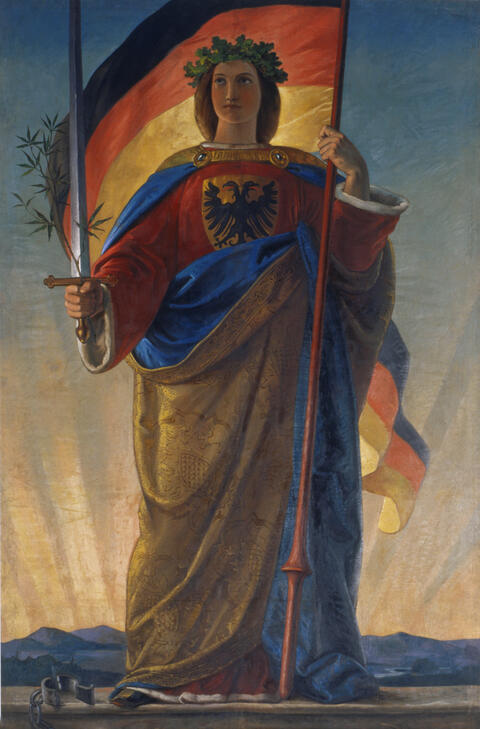
Philipp Veit, Germania, 1848
Germania, painted by Philipp Veit in 1848, was a symbol of the German nation during the revolutions of 1848–49 and in later years.
Connection Questions
- In the mid-1800s, Germany was divided into 30 separate states, and there was a movement to unify them. What is needed to create a nation? How did some believe the idea of the Volk could help with that process?
- How did the students and scholars in this reading define what it meant to be “German”? What role did identifying an “other” play in their definition?
- What are the key differences between Eduard Meyer’s and Gabriel Riesser’s views of who belonged in the German nation? How did they define Germany’s universe of obligation differently?
- In the 1860s, the United States began to grant birthright citizenship (see reading, We the People in the United States). What are the main differences between how the United States defined a nation and how the German thinkers discussed in this reading did?
How to Cite This Reading
Facing History & Ourselves, "Creating the German Nation," last updated August 2, 2016.





